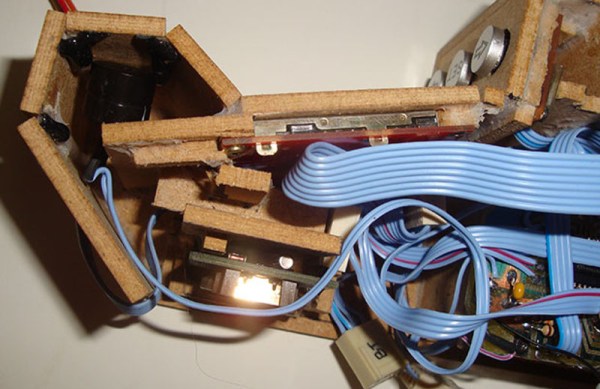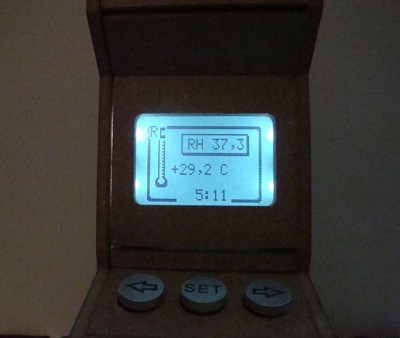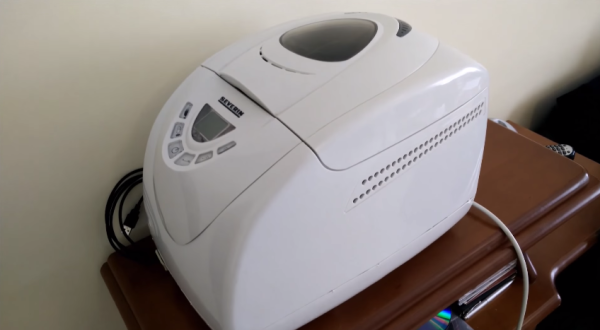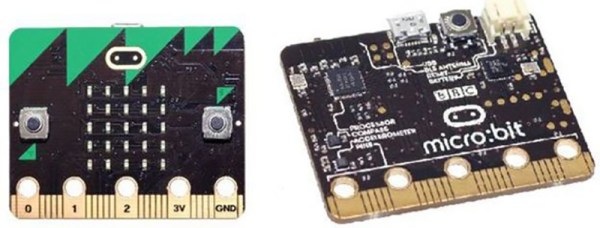It’s a bit scary what you can make with stuff found in the average household, provided you know what you’re doing. How about a TEA laser? Don’t have a high-voltage power supply to run it? Do what [Steven] of rimstar.org did, and power it with a homemade Wimshurst machine.
TEA lasers give off ultraviolet light. In order to see the beam, [Steven] aims it through a glass of water tinted with highlighting-marker juice and onto a sheet of white paper. [Steven] originally used his homemade 30kV DC power supply to light up his TEA laser. He made the laser itself from aluminium foil, angled aluminium, transparency sheets, some basic hardware components, and a 100kΩ resistor.
Although the components are simple, adjusting them so that the laser actually works is quite a feat. [Steven] says he burned holes through several transparencies and pieces of foil before getting it right. Using a Wimshurst machine to power the TEA laser takes another level of patience. It takes about 25 cranks of the static electricity-producing machine to build up enough energy to attempt lasing.
Want to make your own TEA laser, perhaps in a different configuration? [Steven]’s design was based on one of [sparkbangbuzz]’s lasers, which we covered several years ago.
Continue reading “Legit Hack Creates TEA Laser Power By Mr. Wimshurst”



 Standing only about 16 cm tall, the cabinet is quite detailed and resembles the familiar arcade form factor that has consumed countless quarters. It even appears to be made of particle board like the big boys. The screen cutout is filled by a 84×48 monochrome Nokia display, and the rest of the cabinet’s interior is stuffed with a CNC-milled PCB, temperature and humidity sensors, an RTC, and a Bluetooth module for uploading data to a phone. [Rui] even manages to work in an homage to the grand-daddy of all arcade games with a Pong splash screen.
Standing only about 16 cm tall, the cabinet is quite detailed and resembles the familiar arcade form factor that has consumed countless quarters. It even appears to be made of particle board like the big boys. The screen cutout is filled by a 84×48 monochrome Nokia display, and the rest of the cabinet’s interior is stuffed with a CNC-milled PCB, temperature and humidity sensors, an RTC, and a Bluetooth module for uploading data to a phone. [Rui] even manages to work in an homage to the grand-daddy of all arcade games with a Pong splash screen.







 Since she was going with an oscilloscope style vector scan rather than the raster scan the screen electronics were originally designed for, [ErikaFluff] had to create her own horizontal and vertical deflection circuits. Horizontal scan is created by a 555 timer generating a sawtooth wave at 75 Hz. Vertical deflection is via an LM386 driving a hand wound impedance matching transformer. The high voltage flyback transformer and its associated driver circuit were kept from the original CRT, though repackaged to make them as small as possible.
Since she was going with an oscilloscope style vector scan rather than the raster scan the screen electronics were originally designed for, [ErikaFluff] had to create her own horizontal and vertical deflection circuits. Horizontal scan is created by a 555 timer generating a sawtooth wave at 75 Hz. Vertical deflection is via an LM386 driving a hand wound impedance matching transformer. The high voltage flyback transformer and its associated driver circuit were kept from the original CRT, though repackaged to make them as small as possible.










